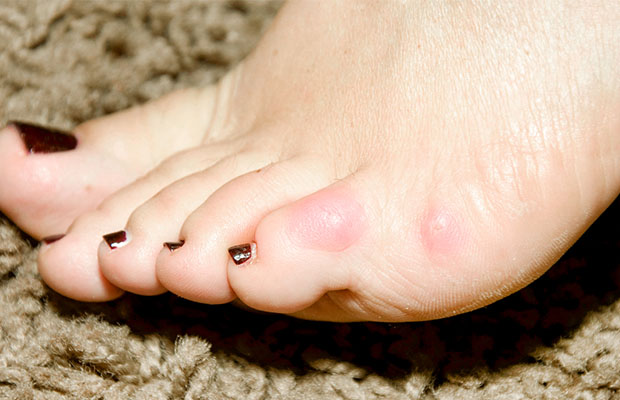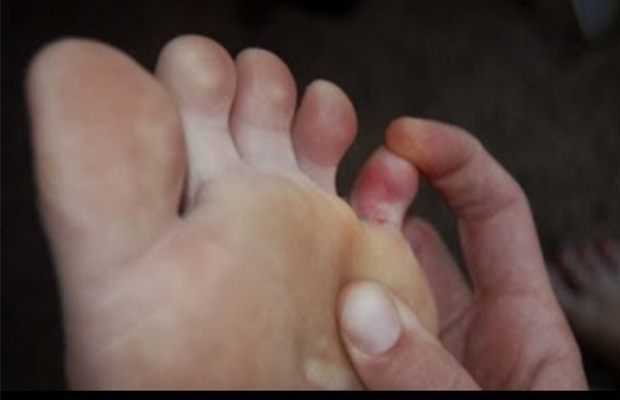Why Does My Pinky Toe Hurt? Causes And Treatment

The exposed location of your little toe makes it more vulnerable to injury. Even though it’s tiny, your pinky toe will let you know when it hurts.
Why does my pinky toe hurt? Pinky toe pain can also result from wearing tight shoes, stubbed toes, dropping heavy objects on them, sports injuries, and heavy object impacts.
Keep reading to learn about symptoms, causes, and treatment of pinky toe hurt.
Table of Contents
Symptoms Of A Broken Toe
- Swelling
- Pain (with/without wearing shoes)
- Stiffness
- Nail Injury
It’s important to have a podiatrist examine your toe if you have severe symptoms, even though the injured toe should be monitored daily. Sores, redness, or open wounds close to the toe are a few of these symptoms, as is pain that worsens or develops and is not relieved by medication.

Why Does My Pinky Toe Hurt?
1. You Broke It
Pain is frequently perceived as being much worse than the actual problem causing it by your pinky toe.
It might appear broken even though it isn’t, for instance.
That does not imply that your pinky toe is in perfect condition. However, it does imply that your pinky isn’t always telling the truth.
An acute fracture or stress fracture might be present instead, for instance.
It makes sense to have your podiatrist take an x-ray of your pinky toe if the pain lasts longer than a day or two and doesn’t seem to go away. This will help you find out what’s wrong.
Ignoring the pain and letting your pinky toe heal on its own can have disastrous effects, such as early arthritis, ongoing pain, or permanent deformity.
2. Sprains
When the pinky toe ligaments are overextended, sprains result.
Sprains in grade I don’t hurt all that bad. They can heal on their own and don’t require podiatric care.
However, sprains in grades II and III hurt visibly and can occasionally hurt so bad you can’t bear any weight on your pinky toe.
For recovery, you might require a walking boot. Additionally, you might even require surgery in some circumstances.
3. Bunions
Although your big toe is typically affected, your pinky toe is occasionally affected as well by bunions.
Shoes with a narrow toe or high heels can aggravate bunions, which are genetically inherited foot abnormalities.
Making sure your shoes fit your feet properly and/or using orthotics are likely the solutions to your bunions, just like they are for corns and calluses.
Related Reading: Bunion On Pinky Toe
4. Corns And Calluses
When your shoes are too tight, corns develop. And they can hurt quite a bit.
When your foot rubs against your shoe too much, calluses develop.
Thankfully, there is a straightforward treatment that usually entails wearing shoes that are the proper size for your feet.
Another option might be orthotics, which enhance the way your foot fits in your shoe.
How To Treat My Hurt Pinky Toe?
1. Utilizing the neighboring toe as a pinky toe splint is one of the treatments for a broken little toe. Stability and protection during the healing process will be provided by tapping the little toe on its inner neighbor.
A cast or wearing protective footwear may be necessary for more severe pinky-toe fractures. Prior to taping the little toe to its buddy in the rare event of small toe dislocation, the bones may need to be realigned.
2. Make sure your footwear fits your feet properly to prevent corns and calluses from developing. To reduce the impact between corns and your shoe if they have already formed, cover them with moleskin.
For a better fit between your foot and your shoe, orthotic shoe inserts are available. Your weight will be distributed differently, and there won’t be as much pressure or friction. You can get a unique set of orthotics made for you by your podiatrist.
3. The first step in treating tailor’s bunions, as with many other foot conditions, is to make sure the patient is wearing the right shoes. This refers to heels with a manageable height and a toe box that is sufficiently wide.
Tailor’s bunions can also benefit from orthotic shoe inserts. A corticosteroid injection can lessen inflammation in some more serious circumstances. As a last resort, surgery is available to treat intractable tailor bunions.
Read More: How To Care After Ingrown Toenail Removal?
Tags: Pinky Toe Hurt